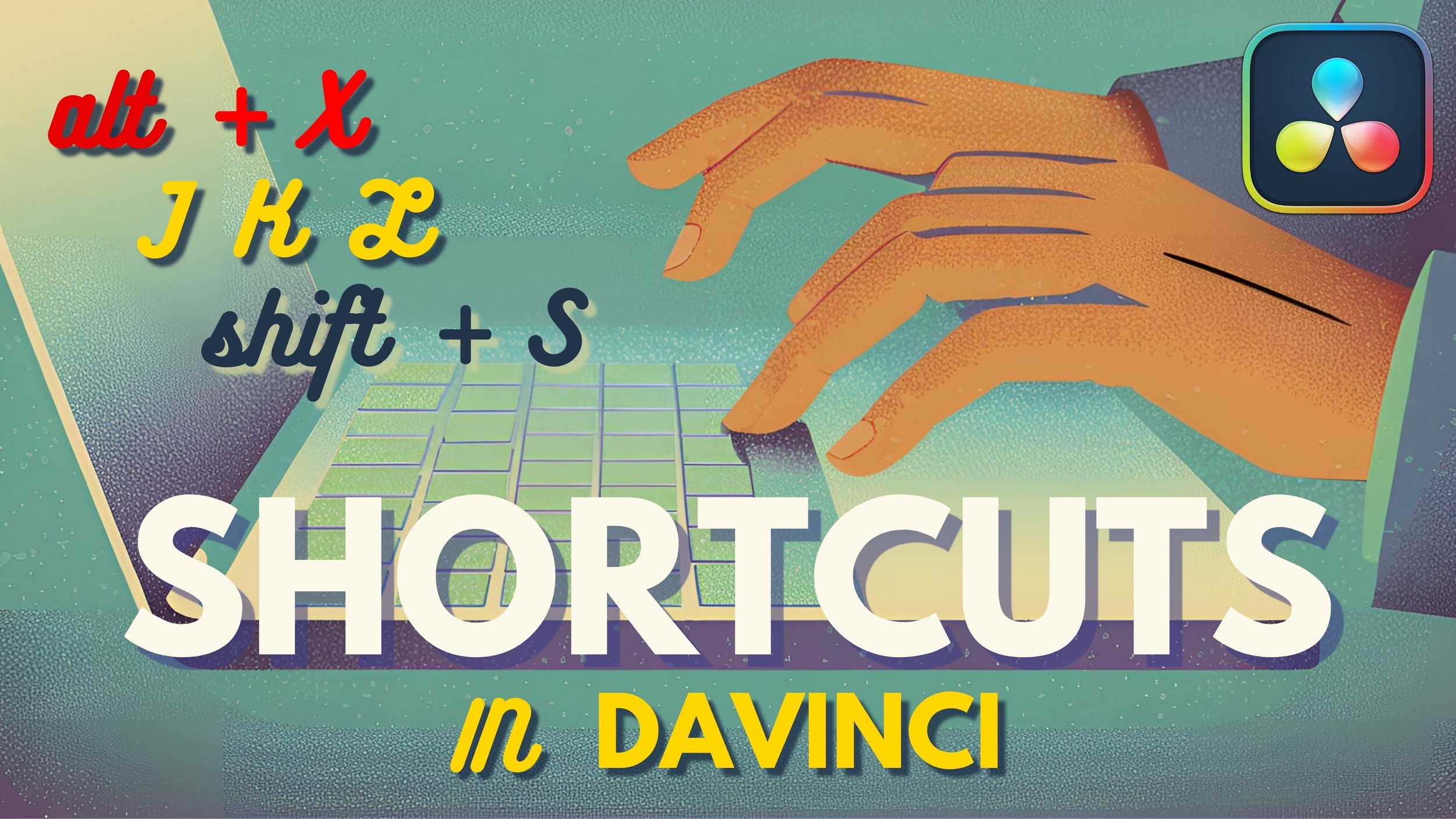DaVinci Resolve Shortcuts: Essential Keys to Mastering Your Workflow
If you want to edit in DaVinci Resolve like a pro, mastering keyboard shortcuts is key. Think of it like playing a piano—each shortcut streamlines your workflow, helping you edit faster and more efficiently. In this article, we'll cover essential shortcuts for navigating timelines, basic editing, trimming, sorting through files, and color grading.
For a visual walkthrough of these shortcuts, check out the YouTube video below, where I demonstrate each one in action using DaVinci Resolve.
Let's dive in!
Moving in the Timeline
Efficient navigation is crucial for smooth editing. Here are shortcuts to move through the timeline:
JKL: Use these keys to navigate. L plays forward, K pauses, and J plays in reverse. Press L or J multiple times to speed up playback, or press K + L or K + J to slow it down by half.
ALT + Mouse Wheel: Zoom in and out of the timeline, with the focus on the Timeline Scroller.
P: View your edit in full screen. Press P again to return to the normal view.
Basic Editing
Now, let's cover the basics:
I and O: Mark IN and OUT points in clips or the timeline.
X: Press X in the Clip Viewer to select the full clip, or press X on the timeline to select IN and OUT points under the Timeline Scroller.
ALT + I/O: Remove IN or OUT points. ALT + X clears both.
F9, F10, F11: F9 inserts a clip, F10 overwrites a clip, and F11 replaces a clip. Be cautious with Replace; it can cause issues.
For more on basic editing, watch my tutorial on the 3-point editing method.
Trimming
Here are the key trimming shortcuts:
A: Default Selection Mode.
T: Switch to Trim Mode, which changes the timeline length based on your edits. Keep this in mind to avoid losing sync between audio and video.
W: Enable Dynamic Trim Mode, similar to Avid's trim feature, allowing precise single-frame edits.
, and .: While in Dynamic Trim, use , and . (comma and period) to add or remove a frame. SHIFT + ,/. adds or removes 10 frames.
SPACE: Preview 2 seconds before and after your cut.
CTRL + SHIFT + Drag: Rearrange clips without creating gaps. Keep Snap enabled (press N) to avoid ghost frames.
N: Toggle Snap. Press N while dragging a clip with the mouse button held down for temporary snapping.
CTRL + R: Enable Retime Controls to adjust clip speed.
Sorting Through Files
These shortcuts help you quickly locate and manage files:
F: Load the selected clip from the timeline into the Clip Viewer—perfect for finding additional sections without disrupting your edit.
ALT + F: Highlight the clip in your Project, useful for finding alternate takes.
D: Disable or enable a clip in the timeline.
Mouse Wheel: Zoom in and out in the Clip Viewer or Timeline Viewer. Press Z to fit the video to the viewer.
Color Grading
Finally, some essential shortcuts for color grading:
ALT + S: Create a Serial Node after the selected node. SHIFT + F creates a serial node before.
ALT + P: Add a Parallel Node. ALT + O creates an Outside Node to invert a mask—great for vignettes.
CTRL + D: Disable or enable a node. Select multiple nodes by dragging, but note that your current node will still be affected.
SHIFT + H: Preview your HSL Key content.
SHIFT + D: Bypass all color grading. This also works in the Edit tab.
SHIFT + F: Maximize the color window for precise adjustments.
CTRL + F: View your grade in full screen.
Middle Mouse Button: Apply a saved still to a clip or copy a grade by clicking the middle mouse button on the clip you want to replicate.
Conclusion
Learning these shortcuts will greatly enhance your efficiency in DaVinci Resolve. From navigating timelines to precise color grading, these tips are designed to save you time and streamline your workflow. Master them, and you'll be editing like a pro in no time!




Learn how to use nodes in DaVinci Resolve for professional color grading. This step-by-step tutorial covers serial and parallel nodes, primaries vs. secondaries, LUTs vs. CSTs, and the best node order for consistent, cinematic results.